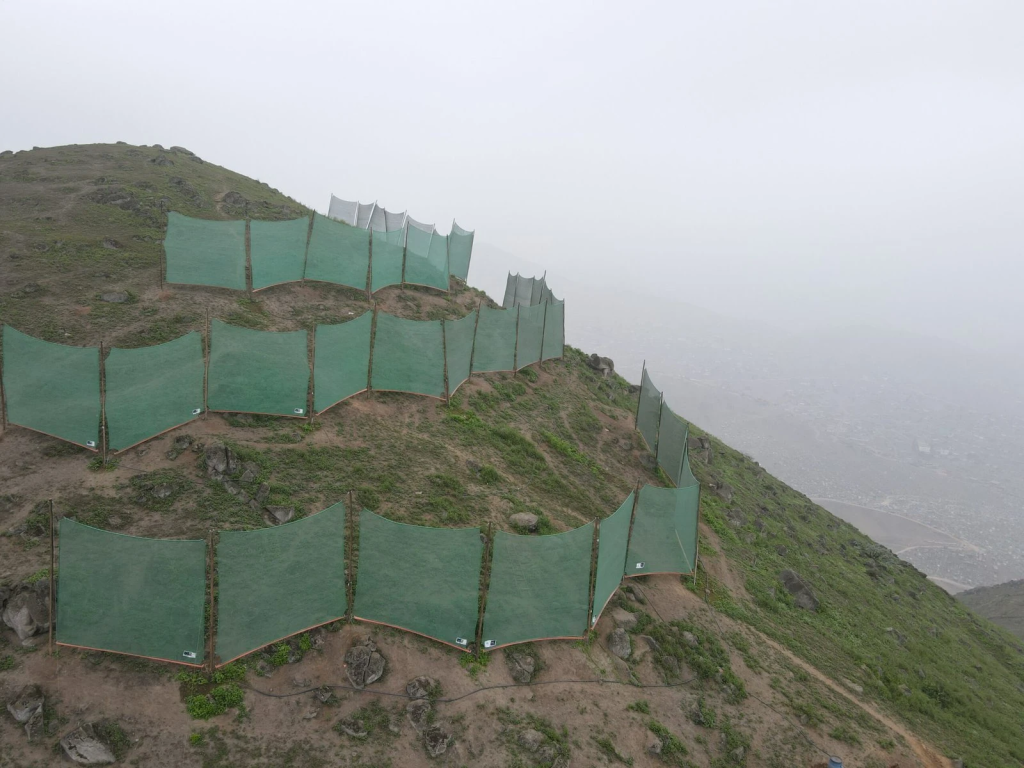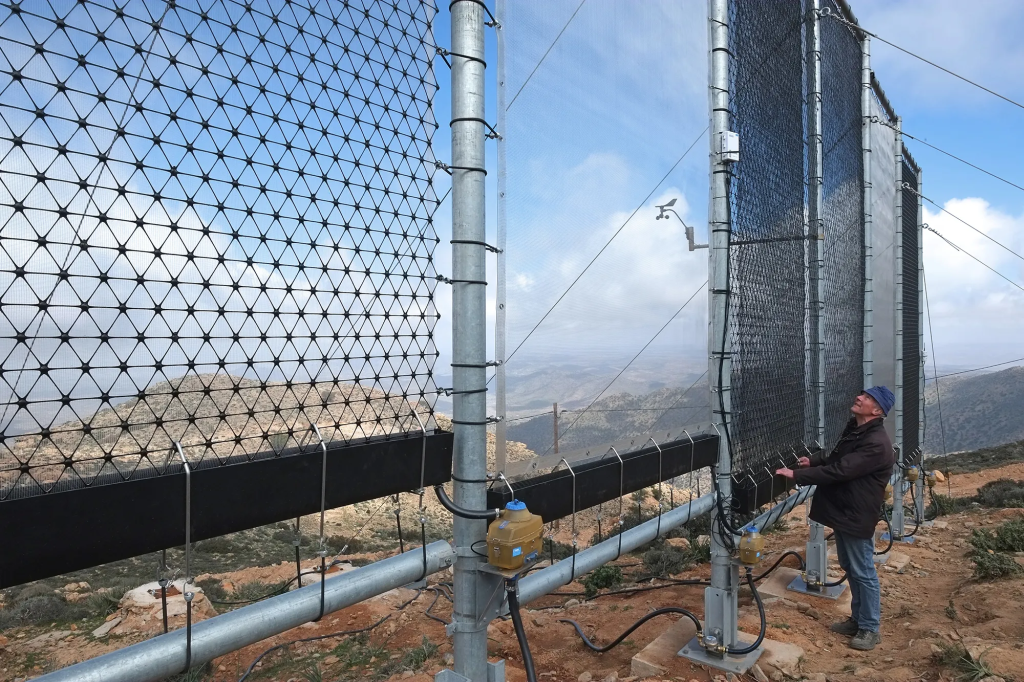In the coastal deserts of Peru, where rainfall is a rare event and rivers flow far from the settlements that depend on them, a quiet revolution has taken shape. For generations, the people living on the outskirts of Lima, in districts like Villa María del Triunfo and Lomas de Paraíso, endured water scarcity so severe that tanker trucks were their only lifeline. The trucks charged high prices for water that was often insufficient and unreliable. But high on the rocky hillsides above these communities, something remarkable has been happening: the air itself is being turned into water.
The Science of Fog Harvesting
Fog harvesting relies on a simple yet powerful principle of physics. When warm, humid air meets a cool surface, moisture condenses into droplets. The coasts of Peru, especially near Lima, Arequipa, and Trujillo, are ideal for this because the cold Humboldt Current cools the air drifting inland from the Pacific Ocean, creating dense morning fogs known locally as garúa. Although this fog rarely turns into rain, it carries significant moisture that can be captured.

To collect it, engineers and villagers build tall mesh panels—often around three meters high and several meters wide—mounted on steel or wooden frames. The mesh, usually made of polyethylene or nylon, is fine enough to trap fog droplets but porous enough to let wind pass through. As the mist drifts across the net, water condenses and slides down into a narrow trough at the bottom. From there, gravity channels it into storage tanks or cisterns.
Each fog collector’s output depends on factors like wind direction, fog density, and air temperature. In the Peruvian desert, collectors typically yield between 100 and 400 liters of clean water per day during the foggy season. While that may not sound like much, when combined across dozens of collectors, it becomes a steady supply that can sustain a small community’s basic needs.
A Community Effort
What makes this story compelling is not only the technology itself but how it has been implemented. Projects such as Peruanos Sin Agua (“Peruvians Without Water”), founded by inventor Abel Cruz, have trained residents to build and maintain fog catchers themselves. Using affordable materials, each structure can be built for a few hundred dollars, far less than drilling a well or installing a desalination system.
In Lima’s outskirts, communities that once waited hours for water deliveries now gather water directly from the sky. Children help clean the nets; local committees oversee storage and distribution. The process builds a sense of ownership, turning what began as an experimental technology into a locally managed solution.
The collected water is primarily used for irrigation, cleaning, and sometimes livestock, but with simple filtration, it can also be made potable. In some schools and community centers, fog water now sustains small vegetable gardens and green patches that were once unthinkable in such dry terrain.
Innovation Rooted in Nature
Although fog harvesting is not a new idea—the earliest experiments date back to the 1960s in Chile—it has evolved significantly. Modern scientists and engineers are studying ways to make the nets more efficient using materials inspired by nature. The surface of a cactus, for instance, is covered with microscopic structures that guide dew toward its base. Researchers have mimicked this with special coatings and fibers that help droplets merge and flow more easily into collection channels. Laboratory tests show such designs can double the amount of water captured under ideal conditions.
However, these advanced materials remain costly for large-scale use. In Peru, most systems continue to rely on simple, durable meshes that villagers can repair or replace themselves. The strength of the approach lies not in technological complexity but in adaptability and self-reliance.

Broader Impact and Global Reach
The Peruvian experience is now serving as a model for other countries facing similar challenges. Projects in Morocco’s Anti-Atlas mountains, Chile’s Atacama Desert, and parts of Eritrea and South Africa have drawn inspiration from these fog-catching networks. Global water researchers have noted that if deployed strategically across coastal deserts, fog collectors could provide millions of liters of water daily. While this would not eliminate global drought, it could drastically improve living conditions for isolated or low-income communities that depend on costly or unreliable water supplies.
The social impact is equally profound. In neighborhoods where lack of water once defined daily life, fog collectors symbolize resilience and ingenuity. They demonstrate that sustainability need not depend solely on high-tech solutions or large-scale infrastructure. Sometimes, the answer lies in reimagining what has always been present — in this case, the very mist that drifts over Peru’s barren hills each morning.
Challenges and Future Directions
Despite their promise, fog-harvesting systems face limits. Production drops sharply outside the fog season, and water yields vary unpredictably with weather patterns. Maintenance and cleaning are vital to prevent contamination, especially in dusty environments. Long-term monitoring and water-quality testing are needed to ensure health standards are met for drinking water use.
Researchers continue to explore hybrid approaches, combining fog collectors with solar-powered filtration or rainwater harvesting systems. Some are experimenting with modular designs that can be assembled quickly after natural disasters, offering emergency relief in drought-stricken regions.
A Lesson in Adaptation
Fog harvesting in Peru stands as a reminder that sustainable innovation need not be complex to be effective. It blends science with local initiative, highland air with coastal humidity, and technology with tradition. Every drop collected is a small triumph — proof that even in the world’s driest places, life can adapt when creativity meets necessity.
In a century defined by climate stress and water scarcity, Peru’s fog catchers tell a story of hope. They show that solutions to some of our greatest challenges may not come from factories or laboratories alone, but from the quiet hills where mist meets mesh, and ingenuity turns vapor into life.